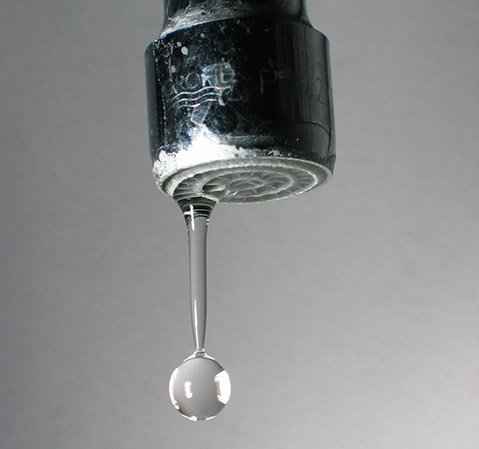Itchy and Scratchy in Goleta
Water District Turns to Its Wells to Reduce Chloroform Producers

It was in October that Caroline Bennet noticed her skin would burn and itch after she showered. Then her daughter began to say her eyes burned when she bathed, and so did their next-door neighbor in Goleta’s Hollister Village. On the Santa Barbara Moms Facebook page, Bennet found that other people across Goleta, from Ellwood to Fairview, were complaining of the same thing, some people saying they checked themselves for lice because their scalp itched so badly. For Goleta Water District, which serves those areas, Bennet’s was the first such complaint it received.
Bennet did something few do. She had her shower water tested by KAR Laboratories, online analytical chemists. What came back were chloroform levels nearly double those that her water provider had found. According to Dave Matson, assistant general manager for Goleta Water District, the highest western Goleta test results this year have been 67 and 72 parts per billion. Bennet’s test came back with 150 µg/L (micrograms per liter, which is fairly synonymous with parts per billion).
Overall, the district was within state drinking-water guidelines to keep total trihalomethane, or chloroform, levels under 80 µg/L, but as an average over four quarters, according to a report presented at Wednesday’s meeting of Goleta Water District’s board. Matson said home water-test kits are problematic, as plumbing or other contaminants can affect results. “The mandated testing the district conducts follows strict protocols,” Matson explained in an email, “and the results are validated and transmitted to the regulators by state-certified, independent labs.”
The water district had been aware of heightened total trihalomethane levels in the water. It was something all water agencies have been watching since the fires around Cachuma Lake — 2007’s Zaca, 2016’s Rey, and this year’s Whittier — sent ash and other organic matter into the reservoir. As well, the return of rain last winter after the six-year drought meant water levels rose over the greenery that had grown. The now-drowned grasses were decomposing, putting into the water further organic matter, the culprit in the formation of THMs, or trihalomethanes. As water destined for city taps is disinfected with chlorine, organic matter in the water can cause chemical reactions that cause THMs, and heat and still water allow more THMs to form. “GWD [Goleta Water District] has been preparing for these changes for over a year,” Matson said.
The board report outlined the steps the district was taking to stay in compliance with drinking-water standards. To rid the system of accumulated sediment and hard-water crystals, in which THMs can collect, 220 miles of pipes were flushed from August through early November. Bennet and her family had moved into Hollister Village in September.
To keep the water moving, the district will also be flushing fire hydrants in neighborhoods. It is reducing by half the water held in storage reservoirs, and that water is being aerated or mixed or otherwise moved around to strip more of the THMs away. To reduce chlorine, the minimum pre-chlorination chemicals are being used at Corona del Mar Water Treatment Plant, as long as algae doesn’t grow.
For the winter months, the district will be drawing water from its nine wells. They can only provide sufficient water during the rainy season, however, and a consultant is advising the district on blending the two sources to lower THMs overall. A further complication is the equipment upgrades needed in order for the wells to be used heavily. As well water is hard and full of minerals, and the water from Cachuma Lake is likely to be full of organic matter for the next decade, Matson thought water filters or water softeners might help those with a sensitive reaction.
Caroline Bennet still has a lot of questions for Goleta Water District, telling the Independent she’s only received a couple of emails from them. The most recent one had informed her that the district was within state guidelines and did not need to test this month, though the board report states it had “increased its water sampling efforts to better understand and monitor THM formation throughout the treatment and distribution systems.” Water agencies are regulated heavily, receiving citations if they fail to report contaminant levels or violate them.
According to Matson and water boardmember Lauren Hanson, district employees and boardmembers have talked and emailed with Bennet over a dozen times since she first contacted them on October 18. Hers was the first skin-irritation complaint they’d received. “Since then we have only received a handful of additional inquiries,” Matson wrote, “and often from people referencing pre-existing skin conditions such as psoriasis, eczema, or concerns over reactions to laundry detergents, soaps, general skin-related allergies or hard water.”
Public complaints and inquiries are reported quarterly to the district’s Public Information Committee. The report for the October 17 meeting states 18 complaints and inquiries were made, mostly about discolored or smelly water. None mentioned skin conditions. “The District tracks and submits complaints to the [state] Division of Drinking Water,” wrote Matson. “If you take a look, [Bennet’s] was the first of its kind this year.”



